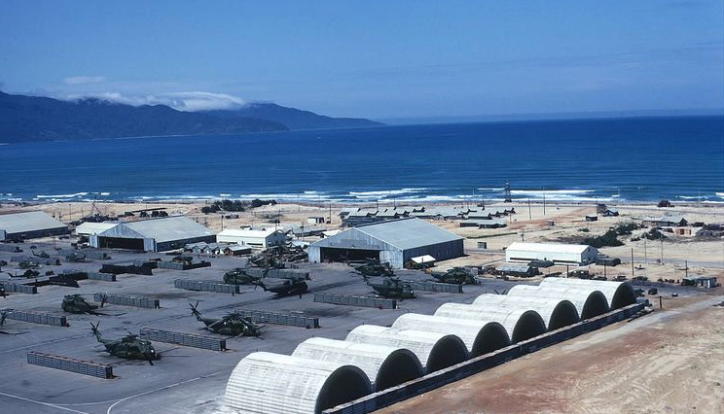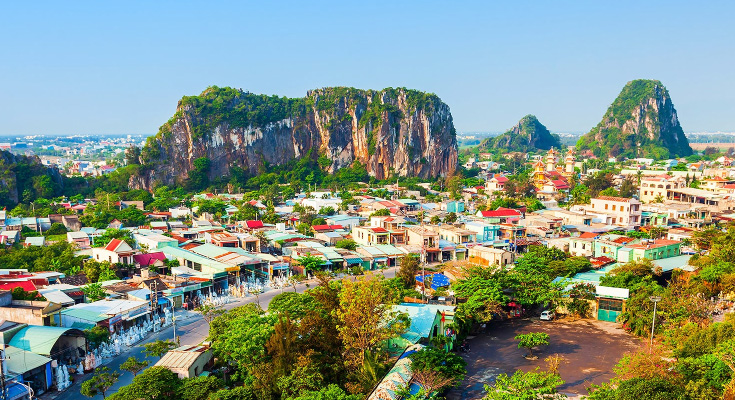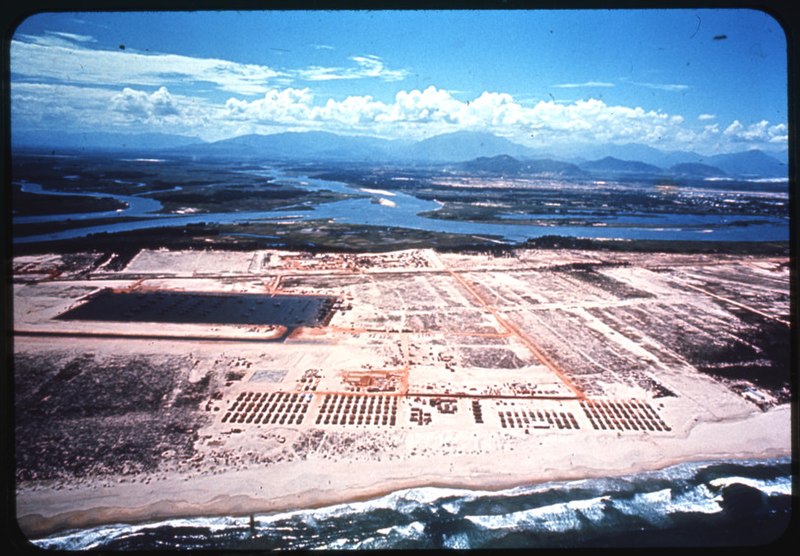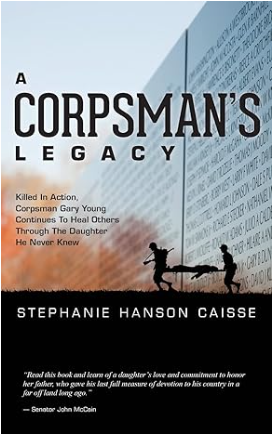Nestled in the scenic landscape of Vietnam’s Da Nang Province, Marble Mountain Air Facility (MMAF) stands as a testament to a turbulent period in history. Home to numerous Marine Corps helicopter squadrons during the Vietnam War, this airbase was a crucial hub for military operations, deeply affecting both strategic outcomes and the daily lives of those stationed there. From its establishment to its modern-day status, Marble Mountain’s story is one of transformation, resilience, and remembrance.
Historical Background
Established in the early 1960s, MMAF was strategically located just a few miles from the city of Da Nang. Its proximity to key military operations and the defensible position offered by the Marble Mountains made it an ideal site for an airbase. Initially, it served various support roles, including logistics and helicopter operations, and quickly grew in significance.
Timeline and Key Events
The facility officially opened in 1965, playing a central role in Marine Corps operations.
On the night of October 27–28 that year, MMAF faced a significant attack during the Vietnam War. Approximately 90 Viet Cong, using 60mm mortar fire for cover, launched a coordinated assault on the facility. Four demolition teams armed with Bangalore torpedoes and hand grenades managed to breach the perimeter and reach the MAG-16 ramp.
In a swift and devastating strike, the Viet Cong destroyed 19 aircraft and damaged another 35. Marine Observation Squadron 2 (VMO-2) suffered heavily, with thirteen of its UH-1E Hueys destroyed, leaving only four operational aircraft. The attack resulted in the deaths of two Marines and one Navy Corpsman, with an additional 91 personnel wounded. The Viet Cong also suffered losses, with 41 killed and four wounded taken prisoner.
This surprise attack underscored the relentless nature of the conflict and the vulnerabilities faced by U.S. forces. Despite the destruction and loss of life, the response of the Marines highlighted their resilience and courage, making it a night remembered for both its peril and heroism.
By 1966-1967, it had expanded significantly to accommodate an increasing number of aircraft and personnel. Hosting various Marine Corps units, Marble Mountain was pivotal for staging combat and support missions throughout northern South Vietnam.
The Tet Offensive in 1968 marked a critical period for the base, underscoring its strategic importance. Despite facing several attacks, MMAF remained operational, continuing to support military efforts. From 1969 to 1971, during the Vietnamization policy, the base’s role evolved to focus more on logistical support as American combat responsibilities shifted to South Vietnamese forces. By 1972, MMAF was primarily used for evacuation and withdrawal operations, playing a key role in the final stages of U.S. involvement in Vietnam.
Daily Life for Marines

Daily life at Marble Mountain was characterized by a blend of military rigor, environmental challenges, and efforts to maintain morale. Living conditions were basic, with Marines housed in barracks and officers’ quarters. The tropical climate, marked by high temperatures and humidity, added to the physical demands of military life.
Morning Briefings and Work: The day often began with early morning briefings, followed by specific duties such as aircraft maintenance, flight operations, logistical support, and security. For aviation personnel, the base was a constant hub of activity, with helicopters frequently taking off and landing for missions that ranged from troop transport to medical evacuations.
Maintenance and Repairs: Aircraft maintenance was crucial, with mechanics working long hours to keep helicopters in top condition, often under challenging conditions. Logistical roles involved managing supplies and coordinating movements, ensuring the base functioned smoothly.
Recreation and Morale: Leisure activities, though limited, were vital for maintaining morale. Informal games, sports, and recreational facilities provided a respite from the demands of duty. Communication with loved ones through letters and occasional short-wave radios helped sustain emotional well-being. Meals, served in mess halls, were basic but essential for sustenance and social interaction.
Challenges and Adaptations: The constant threat of enemy attacks meant vigilance was a part of daily life. The base faced several attacks during the Tet Offensive, requiring constant defensive preparedness. Marines had to adapt to the harsh environment, manage combat stress, and maintain effective operations, showcasing resilience and flexibility.
Modern-Day Status and Use
Following the end of the Vietnam War, MMAF fell into disrepair but has since undergone significant changes. Today, it is a popular tourist destination, renowned for the Marble Mountains’ natural beauty and historical landmarks, including ancient Buddhist temples and pagodas.
Efforts to preserve the historical aspects of the base ensure that remnants of the original facility serve as poignant reminders of its role during the war. The area around Marble Mountain has seen economic growth and urbanization, reflecting the region’s changing dynamics. Infrastructure improvements and new residential and commercial projects highlight its transformation from a wartime airbase to a site of historical and cultural significance.
Marble Mountain Air Facility stands as a symbol of the Vietnam War’s complex history and the evolving nature of military and civilian use in the post-war era. From its critical role during the conflict to its current status as a historical and cultural landmark, the site reflects a journey of transformation and remembrance. The daily lives of Marines stationed there, marked by resilience and camaraderie, add a human dimension to its storied past. Marble Mountain’s legacy continues to be honored through preservation efforts and the ongoing interest in its rich history.
Sound off!


 Our legacy lives through the stories we tell. The Suck Life wants yours! Make Chesty proud!
Our legacy lives through the stories we tell. The Suck Life wants yours! Make Chesty proud!



 Semper Fidelis
Semper Fidelis




I had a friend who was in vmo at the mountains I believe 65 when they got over run they just let them go the sachel charged the uh1 ,after thay they had perimeter guards.
I pulled guard duty on Marble Mountain on either a detachment of slicks or Cobras. Can’t remember which! I believe it was in Nov. or Dec. in 1972. I was stationed at DaNang Air Field with the 366th. SPS from April 2nd. 72 thru Feb. 28th. 73. Went thru 26 “documented” rocket attacks. More like 36. You could tell if it was a group of V.C. or the NVA. The NVA were good. It was the 575th and 577th. NVA. Rocket Battalions doing the damage Mostly 122MM and sometimes 140MM rockets. Sometimes with delayed fuses! They fucked up a lot of areas, especially during Tet of 72!
HMM 361 Tweet’s Tigers and later other tiger names entwined with COs. Jan 1967 to Feb 1968. Crew chief. The huts were up off the ground on 4X4s, and every door that was opened had Playboy gals pasted on it from the inside. The “bathrooms” were wooded structures, and everything was captured below in cut-off 55-gallon barrels, which were burned by the Vietnamese. MMAF was Dodge City back then. Our transportation from crew quarters was 6bys running on a schedule that didn’t cause a delay getting you to the flight room. The chow hall was not used much because of us flying. And there were ample amounts of C Rats available to us. Does anyone remember the large “Care Packages” the field Marines got now and then? I recall watching a movie on the large outdoor screen ( Red Beach was playing), and a large firefight went on behind the screen with rounds the top to the bottom and back up. Making the trip to the flight line via truck, sometimes, had a rifle with fixed bayonet implanted at the big turn in the road to the final approach along Highway 9.
Many of the crews have continued to meet occasionally. We are fading, and several have gone on to guard duty at Heaven’s Gates. This was a part of our experiences In-Country. SF brothers
My time at MMAF was from 11 May 68 to 31 May 69 with (CH-53 Squadron) HMH-463. Survived the 12 May 68, “Mothers Day” rocket attack, got a souvenir bullet (what’s left of it) that pin-balled around inside the A/C and landed by my left foot after taking rounds at Liberty Bridge on the evening of 27 May 68. I was assigned as 1st mech with crewchief Sgt Charley Cornwell on YH-22. I flew missions in YH-22 from mid August 68 until 20 Nov 68. Our last mission in YH-22 was for Operation Meade River. At that time it was the largest combat aerial assult in Marine Corps history. We had about 111.7 flight hours in YH-22 in that 3 month period. Sometime in Feb 69 I was sent to Quang Tri with HMH-463 Det. for Operation Dewey Canyon.
Was in HMH-463 from September 69 to September 70. Charlie Cornwall became a Warrent Officer. Had him as a AMO in Tustin. Funnier then he’ll. I believe he picked up lieutenant. I was assigned to Flight Line. When I got to Tustin in June 67, I was in HMH-462, until they deployed. Picked up 153727 at the factory. Great Bird. Was in a mid-air with a 46 when I was a Gunny assigned to I&I Duty at Tustin. After coming back from Kaneoh and 6 months on USS Tarawa, I retired out at South Weymouth.
My active duty was from June 1965 until April 1969. I was stationed at Marble Mountain from January 1967 until January 1968. I was fortunate to have missed THE TET OFFENSIVE by about a week. The living area when I arrived were wooden frames covered with Marine Corps green thick canvas. Our night lighting was candle light. Every morning we would wake up and have to cough and blow our nose to get the black soot from the candle smoke out of our nose and throat. I don’t remember what month but fairly early on the canvas was replaced with corrugated galvanized steel making it more like a quonset hut than a barracks. Next we got electricity. One string of lights down the center of the ceiling powered by a large portable generator. The large hangers were not there although we watched the Sea Bees pour and finish concrete floors then build corrugated walls and roof. The interior of the hangers was totally empty. Our two senior NCOs were Gysgt. Fejdasz (Fey-Dash) one of the finest men I met in the Corps and Staff Sgt Collins also a great leader. Together our leaders drew up plans, ordered all the lumber and material and we built the interior offices and working area for the T-64 engine shop. Looking back that was actually pretty impressive. We had a chow hall that served hot meals three times a day. It wasn’t Air Force good but way better than our brothers stationed in the field. We slept on canvas cots, later replaced with spring bunk beds we stole from the Army. Marble Mountain was right next to China Beach, an in-country R&R center for grunts recuperating from battle. They went there for a break from actual fighting. We went there for lunch. All in all we had better accommodations than probably 90% of others that served in Vietnam. As I write this I’m almost embarrassed at how good we had it compared to the grunts but in the Marine Corps you do as your told and STFU. I lost three high school classmates KIA, one of them my drilling partner from my high school wrestling them, Bobby Joe Gravel. I have another close friend, Johnny Held who survived the attack on Khe Sanh. Mine was like a 9 to 5 job and I only realized I was actually in a war was August 28th we got got hit by a rocket and mortar attack. I believe there 9 killed and some 80 wounded. Looking back I realized just how blessed I’ve been.
Thanks for the detailed insight, Victor. Welcome Home!
Having been the Avionics Chief of HMM-361. I was one of three units that opened MCAF Marble Mt on 1 Seep 1965 and yes my PTSD started on 29 oct 1965 when Charlie tried to overrun the base.
I have copies of the Stars and Stripes telling what HMM-361 did during my time with them from 1 Aug 1965 to 30 June 1966.
MGySGT Harold F Rakop Jr ret.
I had a friend who was in vmo at the mountains I believe 65 when they got over run they just let them go the sachel charged the uh1 ,after thay they had perimeter guards.